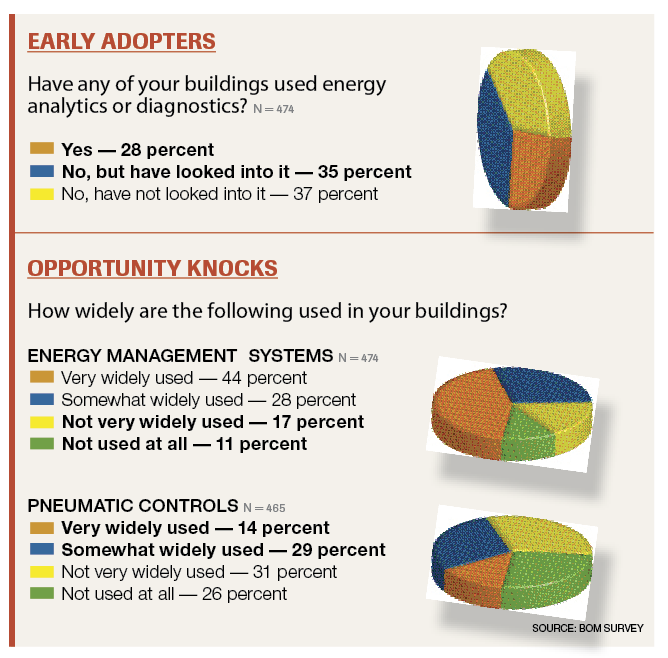Data Mining Helps Find Faults In Building Energy Use
If you are buying books or music from an online site, it's likely that the e-commerce company analyzes your purchases, creates a profile of what type of books or music, authors, or performers you like, and then proactively sends you email regarding other items you may be interested in purchasing. Those firms regularly mine data to improve their business performance. Generally, facility managers haven't fully embraced such data analytics. However, that is changing.
Microsoft's main corporate campus provides a look at what the future may hold for facility managers looking to mine the mountain of data available from most buildings. Microsoft is using a software analytics tool known as fault detection and diagnostics to help meet a corporate mandate related to energy and sustainability. Not only did Microsoft discover faults within their HVAC system they were not aware of, the software application also allowed their engineers to save significant time in addressing operational issues. The tool both identifies faults and also provides information about corrective action.
What's more, the fault detection and diagnostics tool has the capability to monetize faults. After the tool identifies a fault, it estimates the duration of the problem and calculates the cost of the uncorrected fault, typically based on wasted energy consumption. For example, the leakage of an outdoor damper might cost $500 per year. Monetizing faults allows Microsoft to give priority to tackling the most costly problems. In addition, this tool compresses Microsoft's typical 5-year campus retro-commissioning cycle to just one year. Annual energy cost savings for Microsoft from automated fault detection alone may exceed $1 million.
Microsoft is in the vanguard of a movement that is likely to transform the way buildings are managed. Software analytics promise to become a critical tool for facility managers to keep buildings operating efficiently. A variety of factors are driving the move to analytics. For one thing, buildings are becoming increasingly complex, and the introduction of new systems is making them even more complex. That complexity is changing the skill sets and expertise required to operate buildings. What's more, nearly everyone who occupies, manages or owns a building is focused on energy and sustainability.
There are now several types of software analytics tools and applications to help analyze building data. But the one with the best-verified results and cost effectiveness is the one that Microsoft is using: fault detection and diagnostics.
How Fault Detection and Diagnostics Works
Fault detection and diagnostics, like other analytic software tools related to building systems, primarily supports technicians and engineers in the field who are dealing with both everyday operational matters and details of building operations as well as broader issues of complicated systems, advanced technology and higher expectations for building performance. The fault detection and diagnostics analytic tools provide insights into building systems that help reduce energy consumption, improve building performance and lower costs.

Related Topics:















